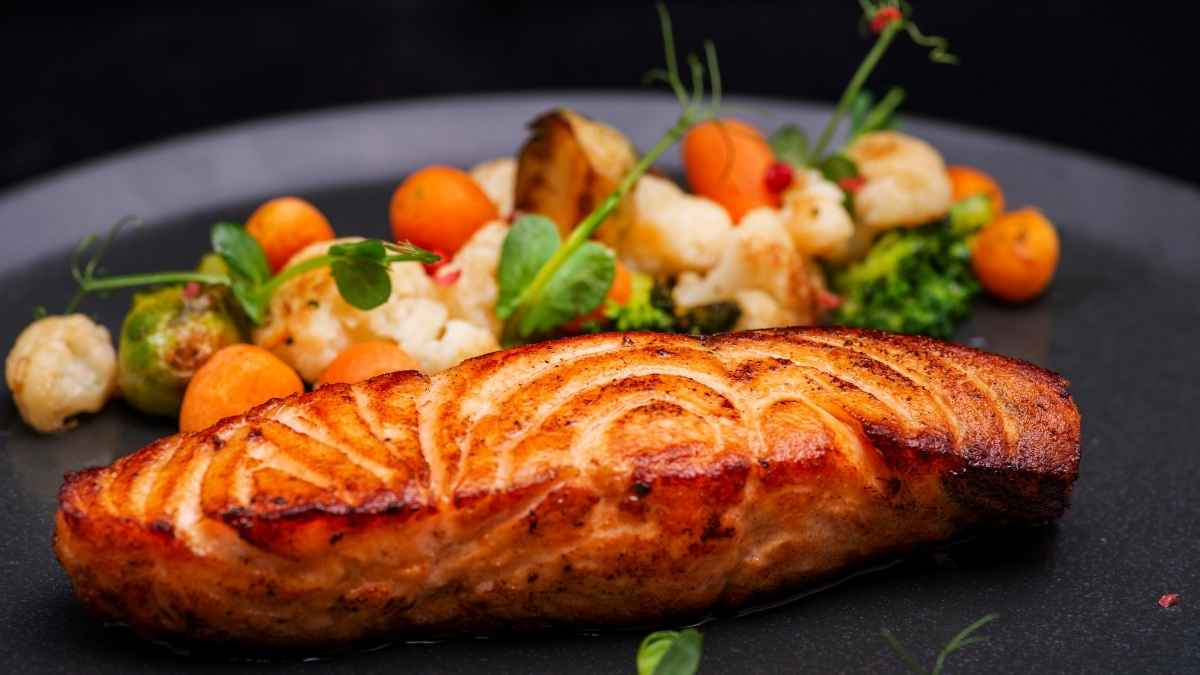Portland’s Kann restaurant introduces the world’s first dish made with lab-grown salmon. At the end of May 2025, Portland, Oregon’s Kann restaurant became the first to offer a dish made from lab-grown salmon. This innovative offering comes after the U.S. Food and Drug Administration (FDA) authorized the sale of salmon produced from fish cells.
Produced by the company Wildtype, the salmon is labeled “Wildtype Salmon Saku” and represents a new milestone in sustainable seafood production. The move reflects a growing trend toward more sustainable and efficient seafood options as the demand for seafood continues to rise globally.
What is lab-grown salmon and how does it work?
Lab-grown salmon, also known as cultivated salmon, is produced by growing real fish cells in a lab rather than raising actual fish in aquaculture farms. The salmon is cultivated in stainless steel tanks, where the cells are nurtured in a nutrient-rich solution. This process mimics the natural growth of fish but without the need for traditional fishing or farming practices.
In contrast to wild or farmed salmon, which take years to reach market size, lab-grown salmon can be produced in as little as two weeks, offering a faster, more sustainable alternative. The product is designed to look and taste like traditional salmon, offering the same nutritional benefits but with a much smaller environmental footprint. Here’s how the process works:
| Step | Description |
|---|---|
| Cell Harvesting | Fish cells are taken from young salmon. |
| Cultivation | Cells are cultured in tanks with a nutrient solution. |
| Growth Time | The salmon grows in about two weeks to reach restaurant size. |
| Final Product | The salmon is processed and ready to be served. |
With the world’s population expected to reach 10 billion by 2050, demand for seafood is anticipated to grow dramatically. Aquaculture (farm-raised fish) already supplies more than half of the seafood consumed worldwide, but traditional methods have their limits. Lab-grown salmon could provide a scalable solution to meet this growing demand without harming the environment. Below, the key benefits of lab-grown salmon:
- Sustainability: No need for wild-caught fish, reducing pressure on ocean ecosystems.
- Efficiency: Quick production timeline—salmon can be ready in two weeks.
- Environmental Impact: Lower carbon footprint compared to traditional farming methods.
- Quality and Taste: Mimics wild-caught salmon in taste and texture.
The market potential: Could lab-grown salmon become a $400 million industry?
The salmon trade is already worth $23 billion annually, with projections to reach $44 billion by 2024. If lab-grown salmon captures just 1% of the market, it could become a $400 million industry by 2034. In fact, the creators of Wildtype salmon, a company backed by celebrities like Leonardo DiCaprio and Robert Downey Jr., believe that this technology could reshape the seafood industry.
Diners at Kann, a Haitian restaurant in Portland, can now experience this novel seafood option. The dish features cubes of lab-grown salmon served with pickled strawberries, tomatoes, and a rice cracker. As the first restaurant in the world to serve this product, Kann’s offerings represent the cutting edge of sustainable dining.
Though the technology is still in its early stages, the potential for growth is vast. Wildtype has already announced plans to expand to other restaurants, including Texas-based Otoko, to introduce lab-grown salmon to a wider audience. This is just the beginning for the lab-grown seafood market, and with continued investment and development, it could one day become a mainstream option.

